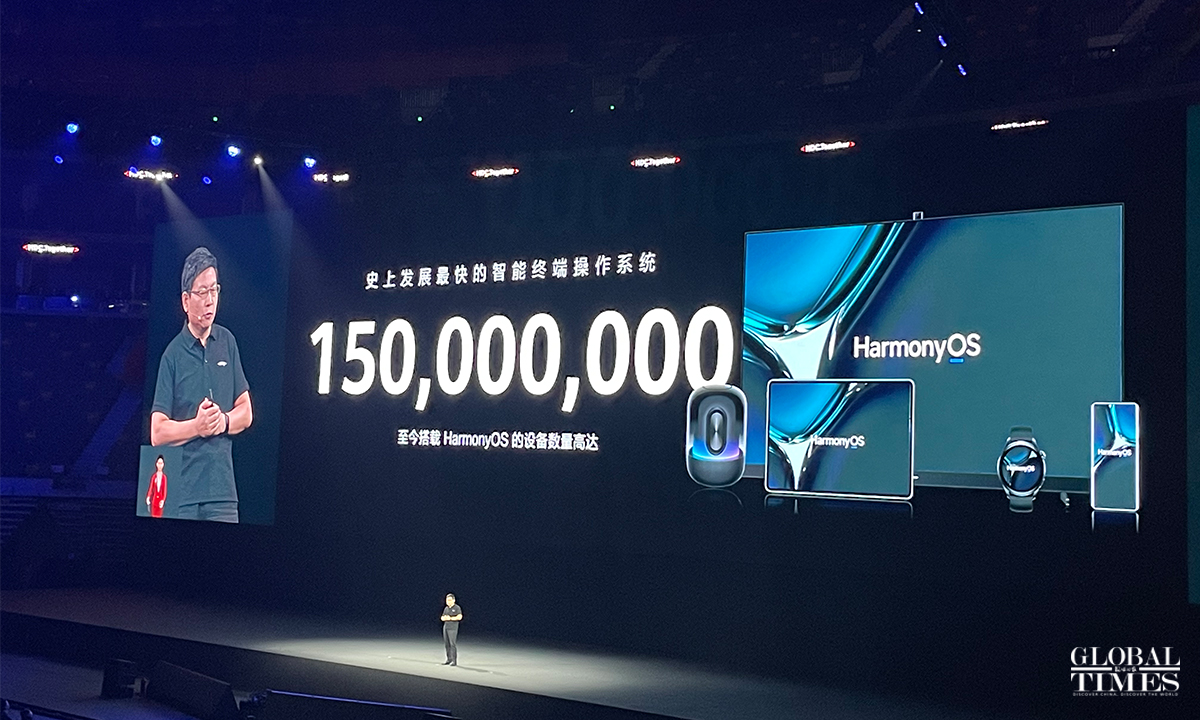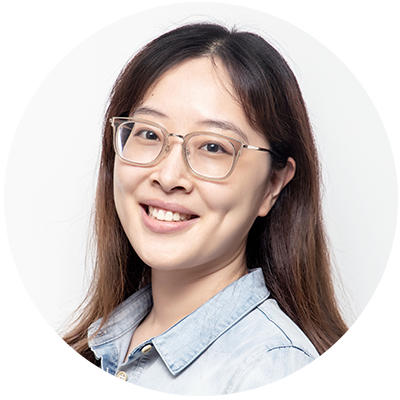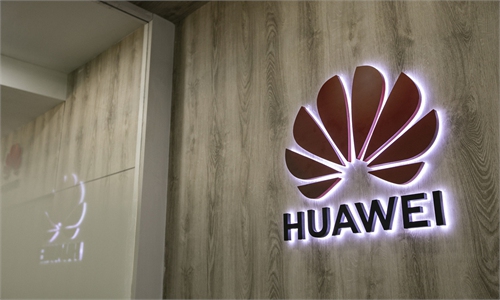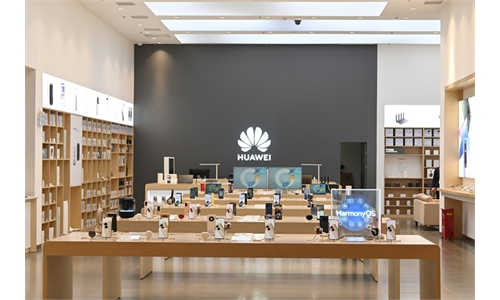
Richard Yu, Huawei's rotating chairman at the 2021 Huawei Developer Conference on Friday. Photo: Shen Weiduo/GT
Chinese telecommunications giant Huawei launched an updated version of its self-developed operating system (OS), the HarmonyOS 3.0 for developers on Friday, putting the firm on the fast track to shake off reliance on Google's Android, while also paving the way of recovering from a hobbled handset business amid US sanctions.
The 3.0 version is an update from the 2.0 version, which was launched in June this year. Since then, Huawei started rolling out HarmonyOS on selected smartphone models, offering users the chance to switch from the current operating system based on Google's Android platform.
The HarmonyOS 3.0 developer preview version allows developers to use more powerful tools to innovate across more types of terminal devices, bringing consumers a new experience of intelligent connection of all things, Tim Gong, the president of software at the Huawei Consumer Business Group, said at the annual Huawei Developer Conference (HDC) in Dongguan, South China's Guangdong Province on Friday.
Gong said the HarmonyOS 3.0 beta version will be officially launched in the first quarter of 2022.
HarmonyOS was unveiled in 2019 as a "back-up" for Google's Android when the Chinese company was barred from using Google's services under a US government export ban. Research on the OS actually began in 2012.
While rather than being a "replacement," the company stressed the OS can also be deployed across multiple devices, including smartphones, computers, and other electronic devices, which could also help it gain an early foothold in the era of "Internet-of-Things."
Huawei has also unveiled several new products using HarmonyOS, including a tablet and smart watch over recent years.
So far, devices updated to Huawei's HarmonyOS, including its smartphones, watches and tablets, have already surpassed 150 million, making it the fastest-growing intelligent terminal OS ever, Huawei's rotating chairman Richard Yu Chengdong said during a keynote speech at the HDC on Friday. Yu added that the number could surpass 200 million by the end of the year.
Huawei previously estimated that HarmonyOS could be installed on about 300 million devices by the end of 2021, with about 200 million being on Huawei's own devices.
Global developers of Huawei Mobile Services (HMS), its own solution based on HarmonyOS after being banned from using Google Mobile Services, have reached 5.1 million. The revenue of HMS ecological developers in the first three quarters of 2021 increased by 62 percent year-on-year.
"Looking at the numbers, HarmonyOS and its own ecology is developing in a very rapid way," Jiang Junmu, an industry insider and a close follower of Huawei, told the Global Times on Friday.
"It's now standing firm in the industry," Jiang said.
The hard-won progress has come after four rounds of US sanctions over the past few years, which have gradually forced the company to become a software producer rather than hardware manufacturer.
"The greatest company of the last century is not only a company that makes products, but also a company that has the strength to speak with standards and patents. Entering the 21st century, the greatest company should be a company that has its own ecology," Yu said on Friday.
Huawei's founder and CEO Ren Zhengfei also reportedly said in an internal memo that the company was focusing on software because future development in the field was fundamentally "outside of US control and we will have greater independence and autonomy." Ren called on the company's staff to "dare to lead the world" in software.
The biggest challenge for Huawei to develop its HarmonyOS is still the lack of new devices due to the US chip ban, Jiang said. "Huawei can only rely on the current mobile phone stock in the market to develop its own OS, but after one or two years, when its phone stock is running out, it will be a problem then."



